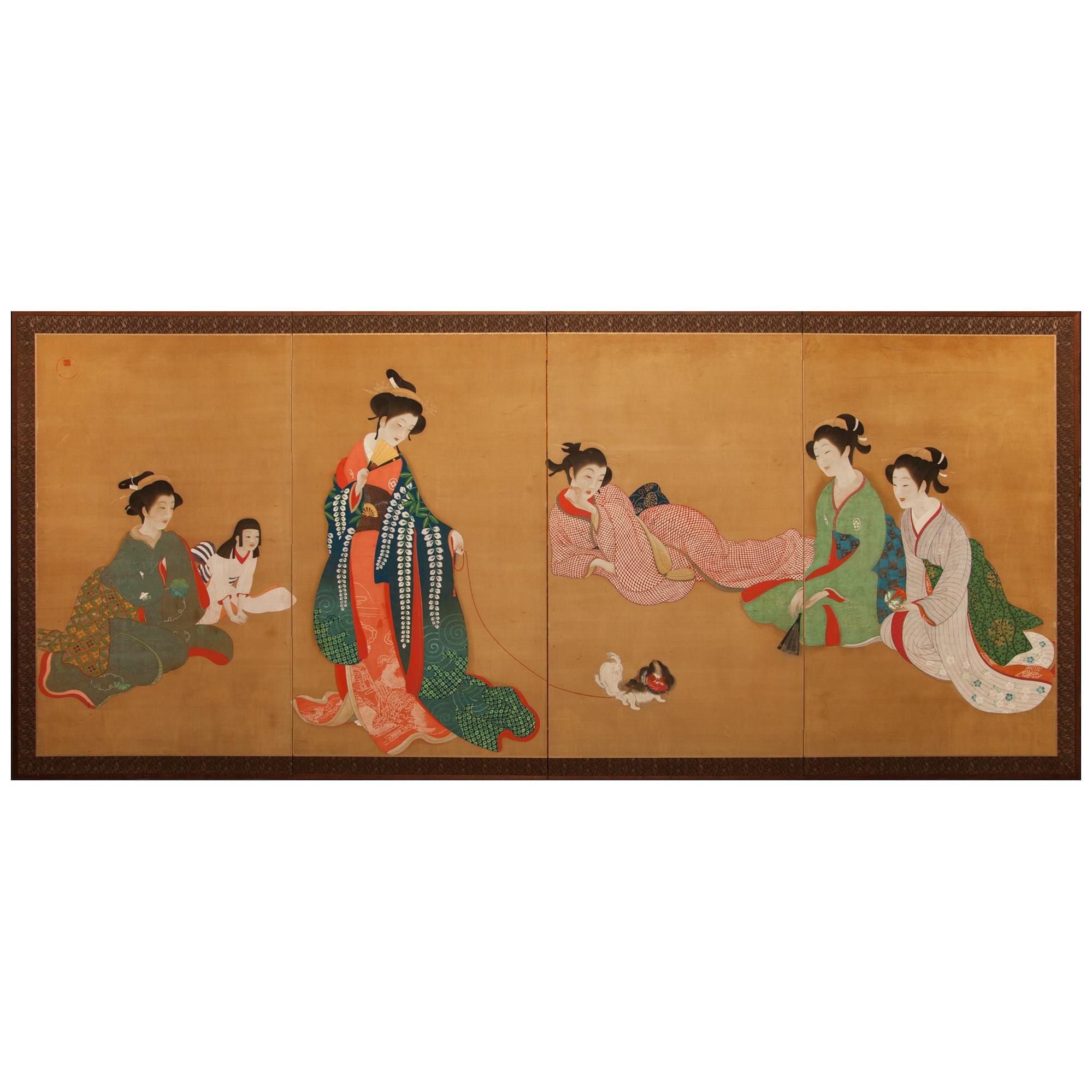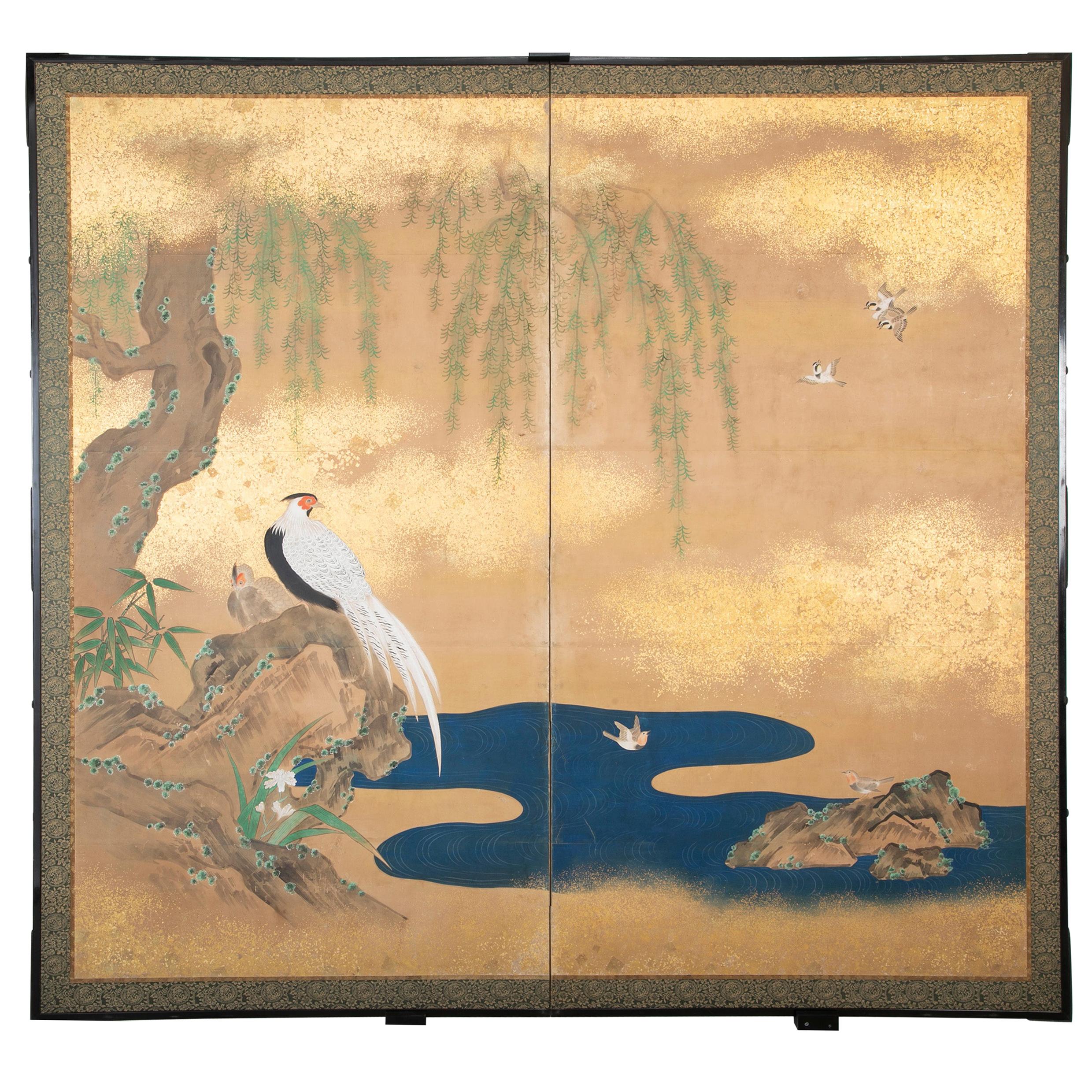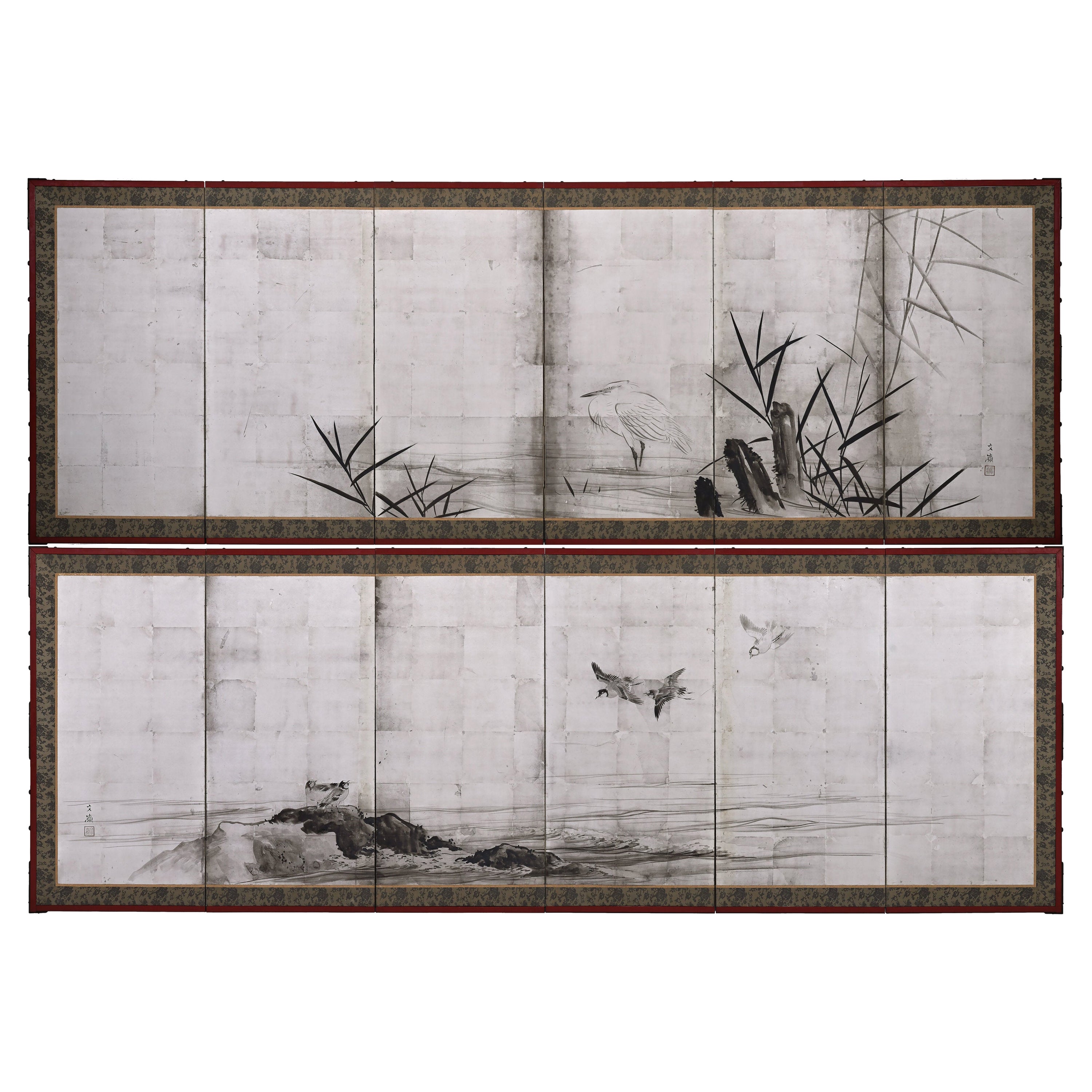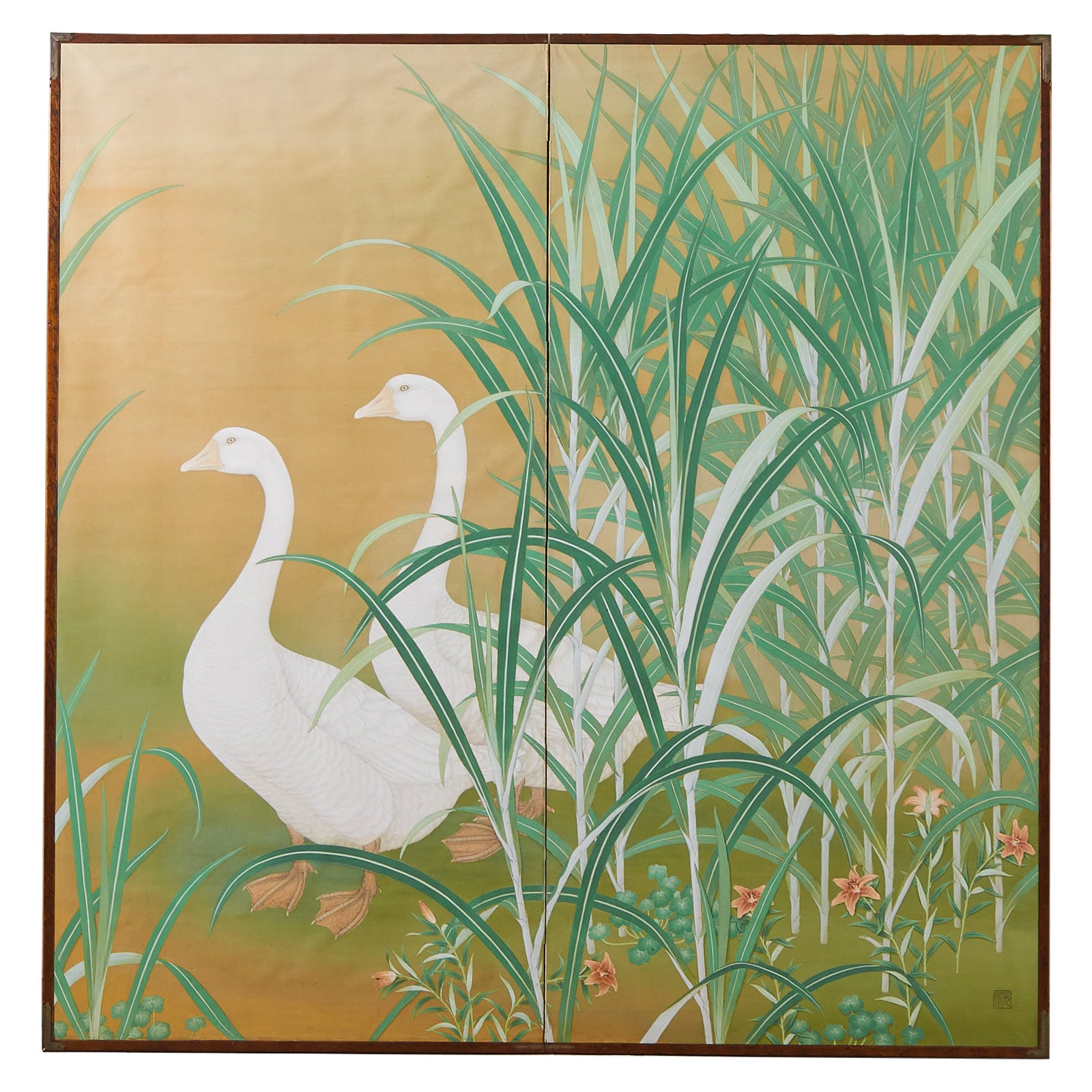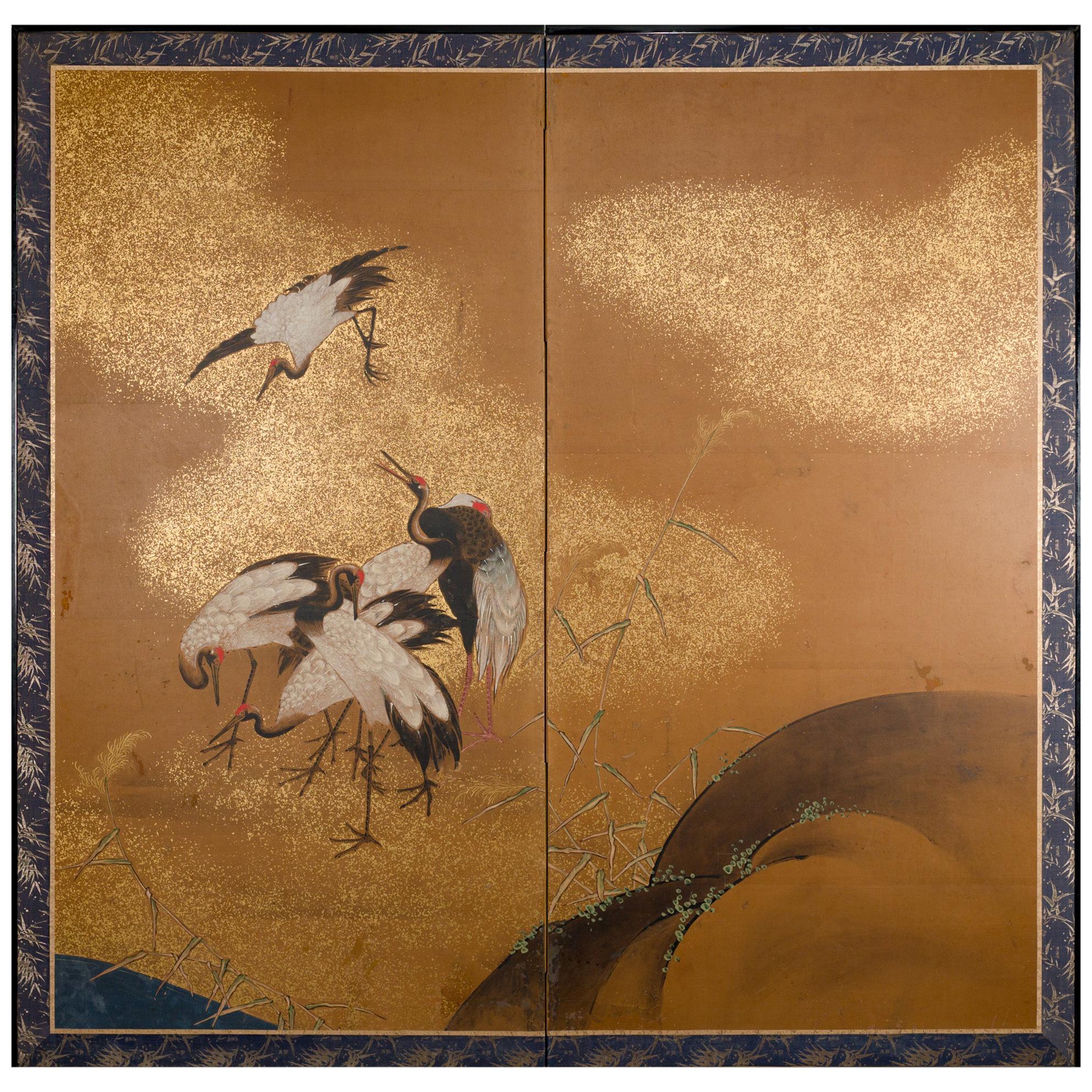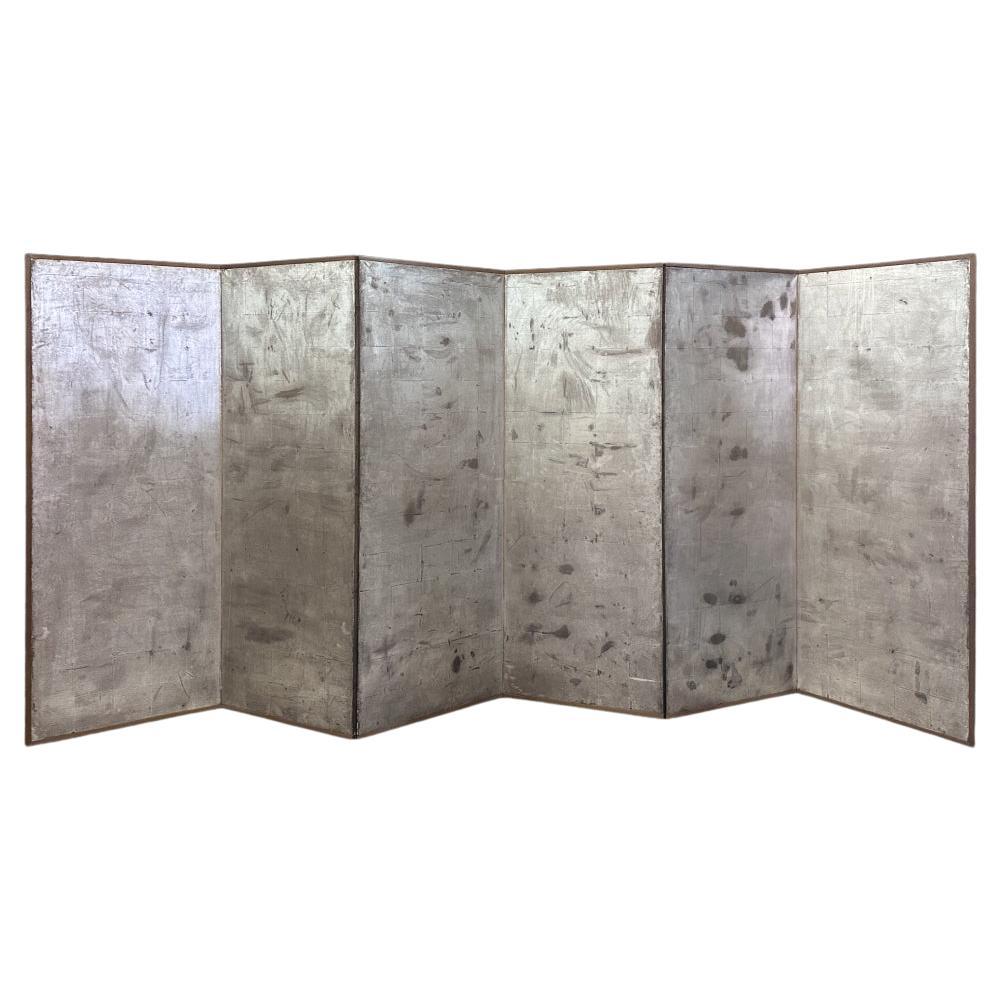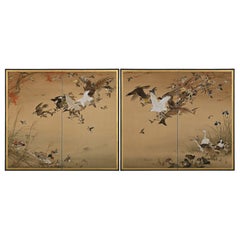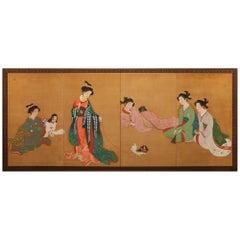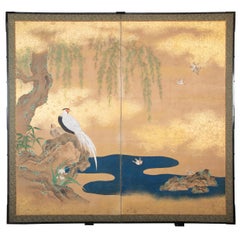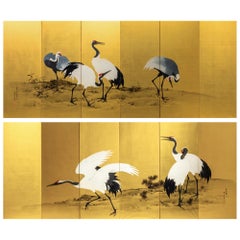
Meiji Period Painted Golden Screen with Cranes by Mochizuki Gyokkei from 1906
View Similar Items
1 of 10
Meiji Period Painted Golden Screen with Cranes by Mochizuki Gyokkei from 1906
About the Item
- Creator:Mochizuki Gyokkei (Artist)
- Dimensions:Height: 68.51 in (174 cm)Width: 144.1 in (366 cm)Depth: 0.4 in (1 cm)
- Sold As:Set of 2
- Style:Meiji (Of the Period)
- Materials and Techniques:
- Place of Origin:
- Period:1900-1909
- Date of Manufacture:1906
- Condition:Wear consistent with age and use.
- Seller Location:Berlin, DE
- Reference Number:1stDibs: LU4555114240072
You May Also Like
- Meiji Period Japanese Screen Pair, One Hundred Birds by Hasegawa GyokujunLocated in Kyoto, JPOne hundred birds Hasegawa Gyokujun (1863-1921) Meiji period, circa 1900. Ink, color and gofun on silk. Dimensions of each screen: H. 170 cm x W. 190 cm (67’’ x 75”) Despite the title, well over 100 birds are represented in this pair of two-fold Japanese screens (the title functions figuratively to convey the idea of a large number). The monumental work is rendered with a comprehensive and highly complex composition which is exquisitely executed and meticulously colored. More a celebration of naturalism than the traditional “One Hundred Birds” paintings which originated in China. This was a subject matter known for its auspicious meaning as much as its actual depiction of nature. These paintings generally had a phoenix (occasionally peacocks) placed in the center, and the other birds paying homage to it. In this quintessentially Japanese scene painted by Gyokujun, a couple of long-tailed birds modeled after paradise flycatchers are included; these are traditional auspicious motifs in Oriental bird and flower painting and denote themes such as celebration and enduring generations. In addition there is the playful inclusion of single exotic parrot. Even so, the vast majority of the birds and flowers are native to Japan. Reading the scene from right to left, from spring through to autumn, the overwhelming sense is one of movement and haste. It is almost as if the birds are in a race, with the fleetest leading the way forward. Although these native birds were commonly drawn amongst artists of the Shijo school, rarely were they painted with such drama and dynamism. It is not strictly a depiction of sketched birds whose manner was faithfully handed down through the traditions of the Shijo school. Rather we see Gyokujun seeking and achieving new expressions in the heart of the turbulent Meiji period. Hasegawa Gyokujun (1863-1921) was born in Kyoto. He was the eldest son of Hasegawa Gyokuho, a Shijo school painter who studied under Matsumura Keibun. Gyokujun studied painting under his father and became a prominent member of the Kyoto painti ng world from a young age. In 1891 he established the ‘Young Painters Social Club’ along with Takeuchi Seiho, Miyake Gogyo and Taniguchi Kokyo. Also in 1891 he was selected as a judge of the Great Private Paintings Exhibition along with Takeuchi Seiho, Yamamoto Shunkyo...Category
Antique Early 1900s Japanese Meiji Paintings and Screens
MaterialsSilk, Wood
- Meiji Period Japanese Four Panel Screen Bijin At LeisureLocated in Hudson, NYJapanese four panel screen: Bijin At Leisure. Ladies in a tea house with a small dog. Seal reads "Ensan dai" (drawn by Ensan). Meiji Period (1868 - 1912) pa...Category
Antique Late 19th Century Japanese Meiji Paintings and Screens
MaterialsSilk, Wood
- Japanese Meiji Period Painted Screen with Gold Fleck PaintLocated in Stamford, CTJapanese Meiji period (1868-1912) painted screen with gold fleck paint. Remounted during Showa period (1926-1989).Category
Antique Late 19th Century Japanese Meiji Paintings and Screens
MaterialsSilk
- Japanese Silver Screen Pair, Meiji Period, Herons & Plovers, Shijo SchoolLocated in Kyoto, JPHeron & Plovers Ink and silver leaf on paper Maekawa Bunrei (1837-1917) A pair of low six-panel Japanese screens by Maekawa Bunrei, a later master of the Kyoto based Shijo school of painting. On the right screen a solitary white heron stands motionless in a stream. On the left screen plovers play along a shoreline. The elegant forms are executed employing fluid, minimalistic ink brushstrokes. The soft brushstrokes and the sharp light of the silver leaf lend the scenes a sense of translucence. The sophisticated composition superbly exploits the long, horizontal pictorial surface of the pair of folding screens...Category
Antique Early 1900s Japanese Meiji Paintings and Screens
MaterialsSilver Leaf
- Contemporary Hand-Painted Japanese Screen of Cranes by the RiverLocated in 10 Chater Road, HKThe cranes by the river painting of this two-panel screen is hand-painted in watercolor, on squares of gold leaf which are applied by hand to the paper base over carefully jointed wo...Category
2010s Chinese Paintings and Screens
MaterialsGold Leaf
- Meiji Era Japanese Two Panel Hand Painted Wood Table Screen Tale of GenjiLocated in Studio City, CAA Meiji era Japanese two-panel wood screen, with illustrated images from The Tale of Genji that are exquisitely painted directly on wood with fine detail and precision, accented with scattered 24k gold leaf specks in cloud forms, rendered in the manner of Heian period...Category
Antique 19th Century Japanese Meiji Paintings and Screens
MaterialsGold Leaf
Recently Viewed
View AllMore Ways To Browse
Screens Door Panels
Chinese Screen With Birds
Gold Crane Japanese
Cranes Garden
Sliding Chinese Doors
Japanese Screen With Birds
Japanese Wall Art Pair
Chinese Screen Six
Antique Japanese Wall Panels
Japan Folding Gold Leaf Screen
Japanese Folding Gold Leaf Screen
Painted Panel Screen Pair
Crane Screen
Pair Of Chinese Wall Art
Chinese Shrine
Meiji Cranes
Hand Painted Asian Wall Panels
Birds Folding Screen

